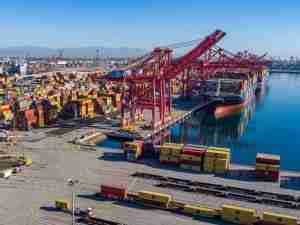About 450 million tons of international cargo worth an estimated $114 billion moves through the Lower Mississippi River annually. That cargo could be at risk if additional funds are not appropriated to address the fallout from this year’s high river stage.
While the threat from the high water is subsiding, the large amount silt that has traveled down with the high water poses an unprecedented threat to the economy of the United States. The U.S. Army Corps of Engineers has received roughly one-third of the budget it will need to maintain the Mississippi River’s shipping channel to congressionally authorized dimensions to avoid major disruptions to the nation’s largest port district.
Channel restrictions or closures would result in a ripple effect on the nation’s supply chain. The river moves two-thirds of U.S. grain exports and is vital to other commodities, such as coal, petroleum products and steel.
“The time to act is now,” said Gary LaGrange, President and CEO of the Port of New Orleans. “The failure of the federal government to respond immediately will have severe economic impact. We are calling on Congress to pass an emergency supplemental appropriation, which should include the $95 million needed to maintain and restore the river to its authorized channel dimensions.”
The shipping channel on the Lower Mississippi River from Baton Rouge to the mouth is normally maintained to a Congressionally-Authorized depth of 45 feet and the width of the navigation channel varies at different sections. The channel at Southwest Pass, near the river’s mouth, has already been reduced from a width of 750 feet to 200 feet, which poses safety concerns. Before the high water season brought additional water down the Mississippi, the river’s draft had been reduced to 44 feet because of lack of adequate funding. If no further funding is made available, the draft could be reduced even more dramatically as the river levels begin to drop over the next several weeks.
“Restricting Mississippi River traffic is like reducing major interstates to a single lane and imposing size restrictions on vehicles because the roads were not maintained,” said U.S. Rep. Cedric Richmond, D-New Orleans. “In this case, getting the critical products we need to market will be slowed. The result will be significant losses for business owners, price increases and sluggish trade. Congress and the Administration need to act now. I’m pounding the pavement until I get results.”
If additional funding is not received to boost dredging activities, ships would be forced to load light to get in and out of the river. This increases shipping costs and reduces the volume of products to be exported by the U.S., working against President Obama’s goal of doubling exports by 2014.
“The present situation is most critical in Southwest Pass where additional funding and hopper dredges are needed now,” said Sean Duffy Sr., administrator of the Big River Coalition, which represents a variety maritime, shipping and agriculture interests from Illinois to Louisiana. “River crossings upriver and the New Orleans Harbor will be in the same grossly deficient state as the mouth of the river once the river levels drop below 12 feet or so in New Orleans.”
Two thirds of the nation’s grain exports are transported to world markets through the Mississippi River and four of the ten oil refineries along the river depend on unimpeded navigation to receive petroleum shipments. Export coal and imported raw materials, such as steel, rubber, copper, aluminum and lumber for manufacturing, also depend on the waterway. The Corps of Engineers’ impact studies illustrate that for every $1 spent to maintain the Lower Mississippi River, there is a $35 return to the U.S. economy.
“Our river systems are vital to the local, regional, and national










